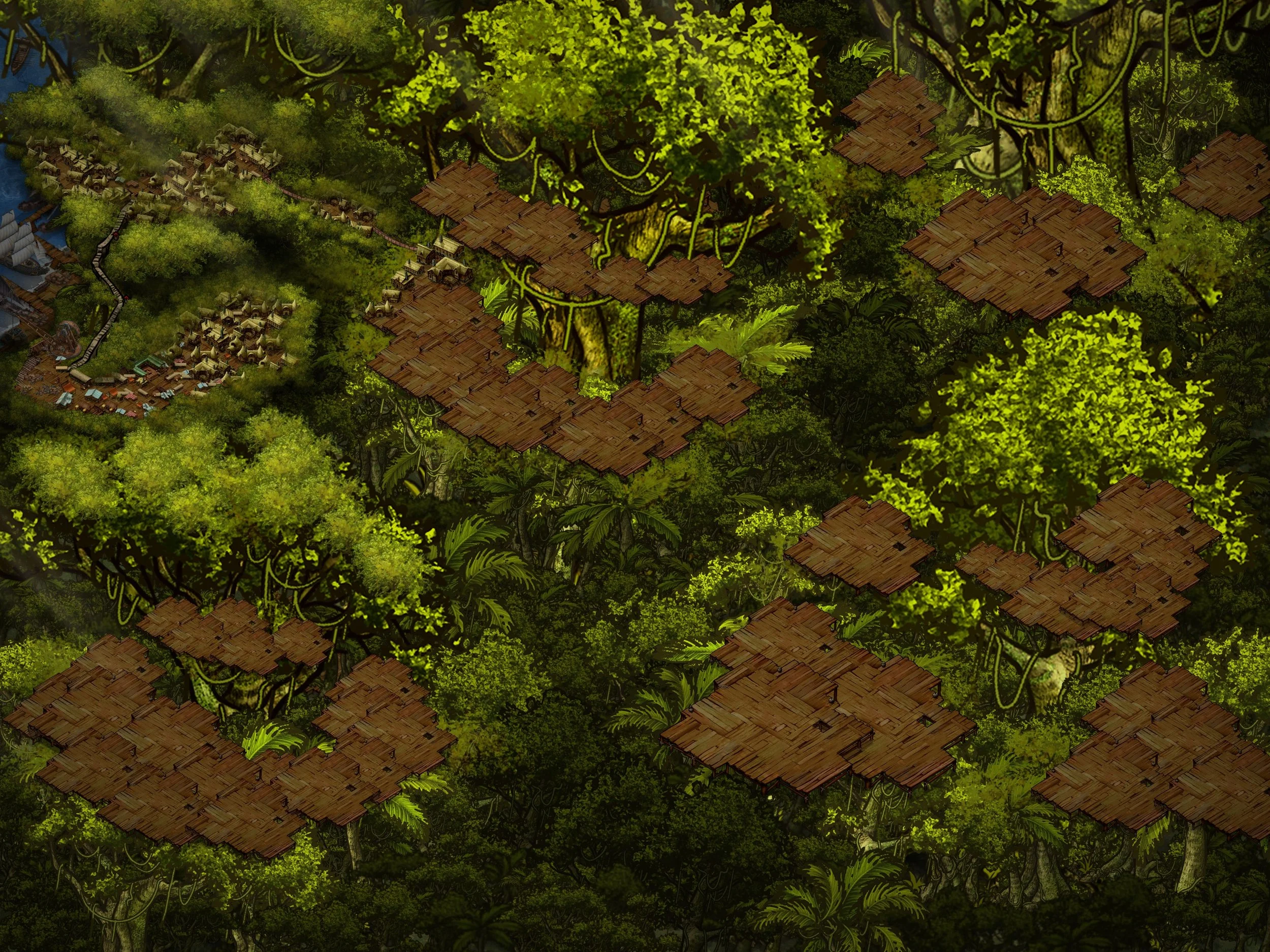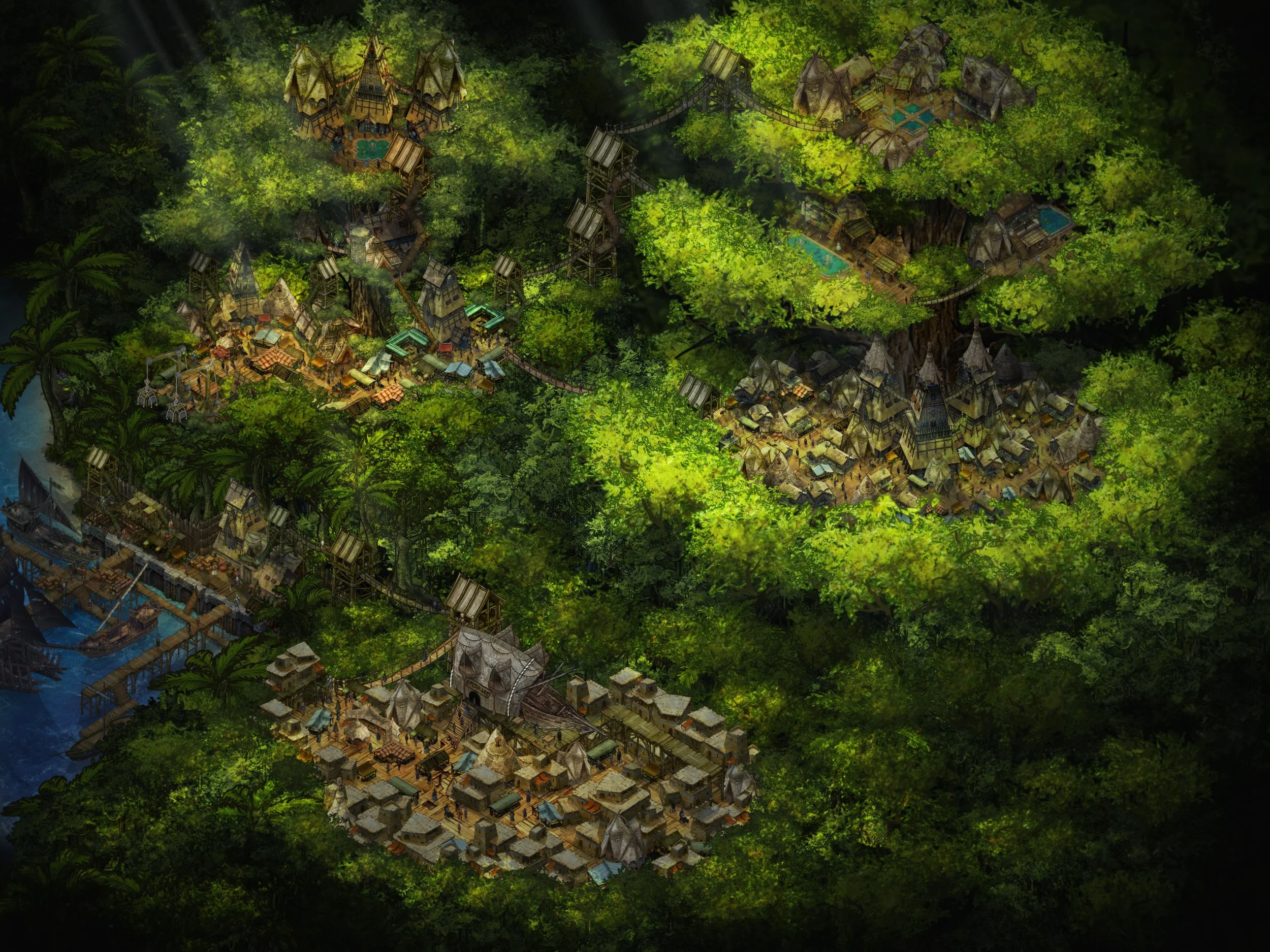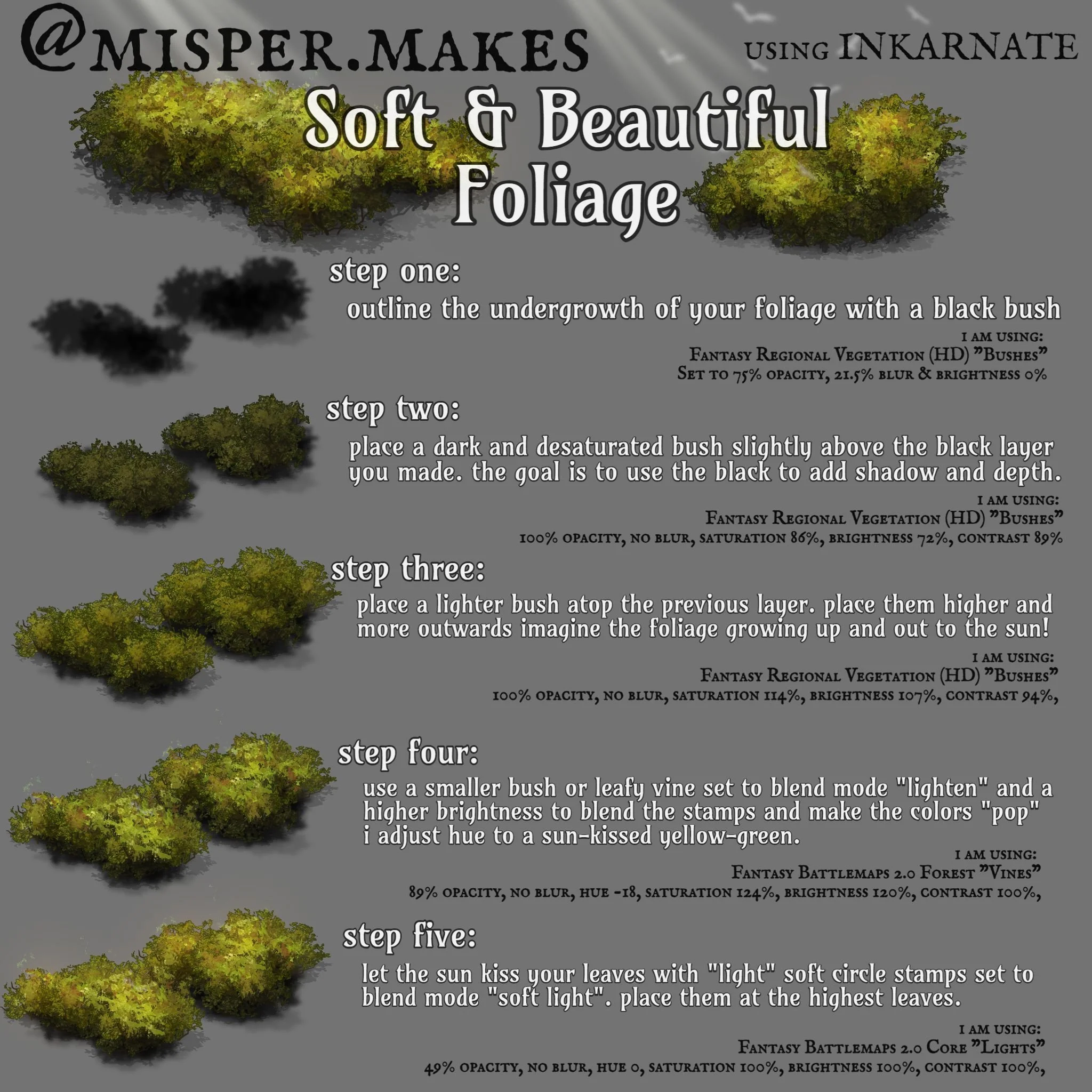Abi Zafi
the heart of the wilds
Ābi Zafi is the "capital" of the southern jungle. The jungle knows no formal city-state limits like the North, and instead the cities are delegated with their own power due to the inherently isolating danger of the dark undergrowth. This city knows a bit more freedom and trade due to its heavily guarded port connection.
ambient playlist

Hunter's Rest - a comfortable inn for travelers and adventurers alike to drink, meet, tell stories or trade knowledge.
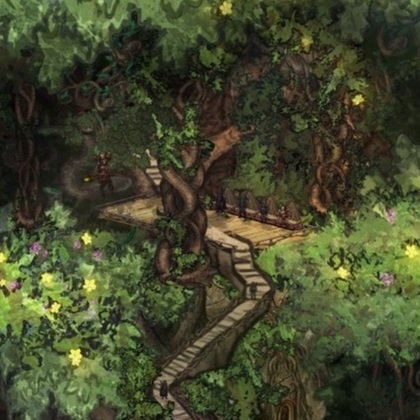
The Chieftan's Seat and The Four Corners - The sentient tree has a single branch the chieftan sits on. If the tree determines them unworthy, they are crushed.

The four corners represent the governing body: The Maker, The Hunter, The Soul and The Mother.
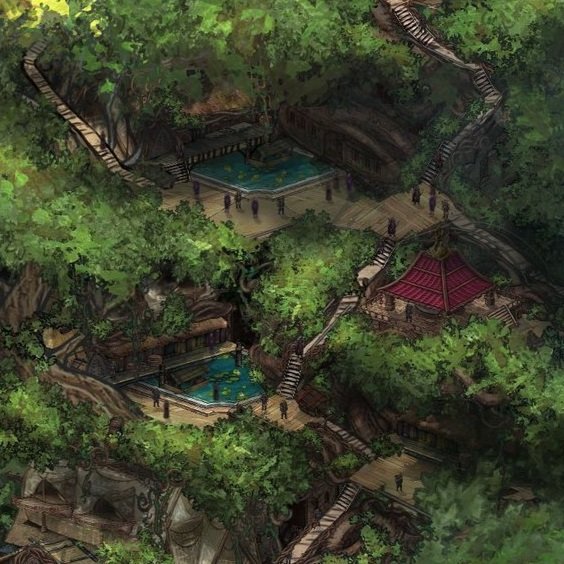
Cloudview Retreat - magical bark-beds hold water and serve as pools for the wealthy to relax in.

The Golden Sun - a temple to T'sehayi, the Goddess of the Sun, Life, Birth, and Light.

The Shipwreck - A poor quality inn known for its lack of laws, fight rings and general nightly entertainment.
~nerd stuff~
* the language conversion i use to type in “sylvan,” the native tongue of my southern part of the continent, is amharic, because it is descended from an older language (proto-afroasiatic) than “common”/english (indo-european) and this part of the continent is meant to feel ancient. i base the names off of romanized amharic using google translate to maintain consistency, but i’m not actually fluent in the language so i apologise for any mistranslations. i do the best i can. *
Society
~ Exports ~
Cocoa and chocolate, elven-made weapons and armor, fermented milk (alcoholic drink), monster parts and items scavenged from hunting trips, sugar, medicinal plants and poisons, vanilla, nuts, tropical fruits
~ Religions ~
Kthoynia, the God of the Hunt, Hunger, Gambling and Corruption, is the most popular and generally seen not as evil, but as the necessary dangers of the hunt and hunger, and thus is treated with dutiful reverence. Maleti, God of Storms, Freedom, Trickery and Impulse, is a popular pick as well considering the southern jungle values their freedom. Ts'ehayi, God of the Sun, Life, Light and Birth, and Mezimuri, God of Love, Beauty, Song and Dance, are also popular in times of celebration, as the jungle, and all life, owes its existence to the sun and celebrates in song and dance.
~ Population ~
Approximately 55,000
~ Unique Notes ~
Abi Zafi is governed by a singular head chieftain, assisted by his "four corners," four people intended to encompass the rest of the common man and voice their needs. They are all elected except for the Chieftain, whom the sentient “Father Tree” tree chooses. A gnarled, twisted chair of a branchy vine makes for the "throne" of the Chieftain, and a Chieftain that the tree decides is no longer worthy -- or never was in the first place -- is twisted and crushed by the living wood.
Politics
Ālek’a/አለቃ (Literal: Chieftain): Zenash Kiros
Ārati Ma‘izenochi/አራት ማዕዘኖች (Literal: The Four Corners):
Serīwi/ሰሪው (Literal: The Maker): Joas Godefai
The Maker represents all the people who make and create things. This includes merchants, native and foreign, artisans and anyone who sells goods, whether traveling or native.
Ādanyu/አዳኙ (Literal: The Hunter): Kiya Ezana
The Hunter represents all of the hunting populace and those who venture out into the jungle, overseeing defense, training, rites of passage and respect to the forest.
Nefisi/ነፍስ (Literal: The Soul): Azmera Etefu
The Soul is the religious head of the city, striving to ensure all the major beliefs are considered, respected, and that the culturally significant religious events happen as they "need" to. Superstition and cultural religion is very strong in the South, so this is an especially important task. Typically, this is the head priestess of the Golden Sun.
Ina Ti/እና ት (Literal: The Mother): Miriam Mulugeta
The Mother is just that, a mother from the community who represents the common people, the concerns of the families, safety, and the everyday struggle to survive.
Mythos
ኣብ ዛፍ in Sylvan literally translates to Father Tree, but Desalond etymologists note that the usage of Father is different than the casual usage; that is Father spelt as Ābi/ኣብ signifies a spiritual importance, whereas ābati/አባት is how the people refer to their own literal fathers. The South believe this “father” tree to be the oldest, most sacred tree, and all the other trees are sons of its seeds. It's worth noting that the father tree is the tree that the government area is built on, the residential area is built on a lesser, albeit still impressive, tree; the “undercity” is below the canopy atop even smaller ones.
~ behind the scenes ~
this was the first draft of abi zafi!
i knew i wanted it to be set on the tops of large trees, because the jungle below was supposed to be so threatening that you wouldn’t ever want to live in it. the more i made this the more it didn’t feel vertical enough — why would they expand more into the jungle than just up? and one tree is supposed to be this visibly massive, large “father” tree that just didn’t come through here. so i decided to scrap it and try again.
this was the second iteration, and the one i actually used for a while in my campaign before also deciding that i hated it. overall i think its servicable, but i realized the largest tree was the tree all the houses were on… not the tree the chieftan lived on. i really wanted to emphasize how special and important this one “father” tree is, and how lucky certain people are TO live on it.
beyond that, the “undercity” feels like its not actually really under the trees everything else is on. everything also felt too spaced out. this is why i decided to go vertical with the aspect ratio for the current one — it’s supposed to be this clustered, vertical city, and this feels too sprawling to really convey the danger of the jungle below.
it was highly requested of me to share how i got the foliage to look the way it does in inkarnate. below is how i made all of my trees. i used the dead trees scaled really high as a “blueprint” for how a tree should be shaped, and then made my own tree trunks out of wood walls and my own foliage from layered bushes and lights. i really wanted it to feel painted, almost like hayao miyazaki’s style of foliage in movies like nausicaa and princess mononoke.

